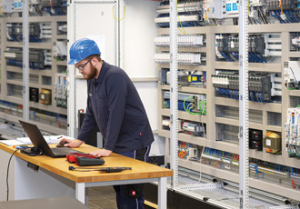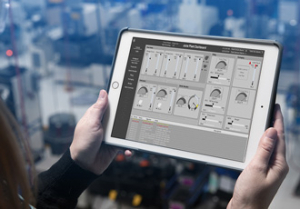Field Precision announces new capability: 3D meshes from photographs
8th September 2011
Source:
Field Precision LLC
The Field Precision MetaMesh program creates 3D slab objects from photographs. The feature is useful for modeling printed circuits and converting MRI slice sequences.
Field Precision creates 3D finite-element programs for electric and magnetic fields, charged particle devices and X-ray imaging. The production of meshes is an important component of any solution. The MetaMesh automatic mesh generator is the portal for all the physics programs. MetaMesh has unmatched versatility with regard to pathways for 3D information:
* Basic and complex native geometric models can be summed to build assemblies.
* Shapes may be imported from Solidworks and other CAD programs via STL files.
* Arbitrary 3D surfaces can be constructed from elevation matrices.
* 3D data matrices from Mathematica and other physics programs can be mapped to geometric variations.
Field Precision has recently added a new MetaMesh capability, direct conversion of photographic information to slab objects in 3D space.
Some spatial objects have the form of a thin layer with relatively complex variations in the layer plane. One example is the printed circuit.
Converting the conductors and dielectrics in a typical layout using basic solid shapes would be quite laborious. A simpler approach is to transfer photographic bit patterns directly to mesh elements in a layer of specified thickness. MetaMesh includes a new PHOTO part type to support this capability. It is useful when graphics files are available to define geometric variations in one or more slice planes.
MetaMesh recognizes images in BMP, PNG and PCX formats. The program analyzes pixels in the image according to either lightness or hue values.
The pixel pattern is mapped to a rectangular slab in element space with arbitrary specified dimensions (Xmin, YMin, XMax, YMax) and -Dz < z < Dz.
As with all parts in MetaMesh, the slab can be placed at any position or orientation using SHIFT and ROTATE operations. The user can define from 1 to 250 intervals of lightness or hue with associated region numbers. In Field Precision programs, regions represent components of the physical solution (such as the conductors and dielectrics of an electrostatic simulation). An element within the slab object is assigned to the region associated with its corresponding pixel in the image.
Photographic analysis is a potentially powerful capability. Setup in MetaMesh takes just a few minutes. The feature simplifies the representation of multi-layer printed circuits and striplines for electromagnetic analysis. Complex printed-circuit assemblies can be built in two steps:
1. Define a foundation mesh with element layers of the appropriate thicknesses.
2. Use photographic layouts to set conductors or dielectrics in each layer. If there are different components in a single layer, they can be represented with different brightness or colors in the image.
The photographic method has broad applications. Metamesh can include information from up to 250 images in an analysis, so that a complete three-dimensional space can be filled from a photographic sequence. A mesh of a complete organ system could be created from an MRI slice sequence.
* Basic and complex native geometric models can be summed to build assemblies.
* Shapes may be imported from Solidworks and other CAD programs via STL files.
* Arbitrary 3D surfaces can be constructed from elevation matrices.
* 3D data matrices from Mathematica and other physics programs can be mapped to geometric variations.
Field Precision has recently added a new MetaMesh capability, direct conversion of photographic information to slab objects in 3D space.
Some spatial objects have the form of a thin layer with relatively complex variations in the layer plane. One example is the printed circuit.
Converting the conductors and dielectrics in a typical layout using basic solid shapes would be quite laborious. A simpler approach is to transfer photographic bit patterns directly to mesh elements in a layer of specified thickness. MetaMesh includes a new PHOTO part type to support this capability. It is useful when graphics files are available to define geometric variations in one or more slice planes.
MetaMesh recognizes images in BMP, PNG and PCX formats. The program analyzes pixels in the image according to either lightness or hue values.
The pixel pattern is mapped to a rectangular slab in element space with arbitrary specified dimensions (Xmin, YMin, XMax, YMax) and -Dz < z < Dz.
As with all parts in MetaMesh, the slab can be placed at any position or orientation using SHIFT and ROTATE operations. The user can define from 1 to 250 intervals of lightness or hue with associated region numbers. In Field Precision programs, regions represent components of the physical solution (such as the conductors and dielectrics of an electrostatic simulation). An element within the slab object is assigned to the region associated with its corresponding pixel in the image.
Photographic analysis is a potentially powerful capability. Setup in MetaMesh takes just a few minutes. The feature simplifies the representation of multi-layer printed circuits and striplines for electromagnetic analysis. Complex printed-circuit assemblies can be built in two steps:
1. Define a foundation mesh with element layers of the appropriate thicknesses.
2. Use photographic layouts to set conductors or dielectrics in each layer. If there are different components in a single layer, they can be represented with different brightness or colors in the image.
The photographic method has broad applications. Metamesh can include information from up to 250 images in an analysis, so that a complete three-dimensional space can be filled from a photographic sequence. A mesh of a complete organ system could be created from an MRI slice sequence.
Similar articles
More from Field Precision LLC
- Field Precision announces new capability: 3D meshes from photographs 8th September 2011
- Field Precision announces Associates program for consultants and small businesses 16th August 2011
- Field Precision releases GamBet 3.0, multicore Monte Carlo software 2nd March 2011
- Field Precision Releases TriComp 7.0 for E&M fields and Electron Guns 22nd September 2010




 technology at Jacobs Vehicle Systems.JPG)







Write a comment
No comments